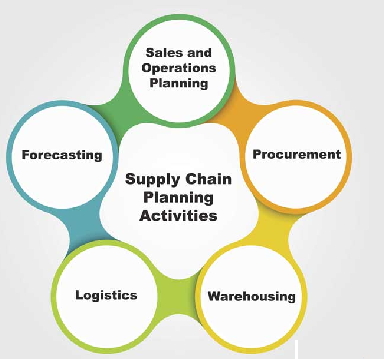Forecasting and Supply Chain Management
Role of Forecasting in a Supply Chain Management
When we talk about Forecasting and Supply Chain management we consider the first component i.e., forecasting which is a very important tool used in every department of a company, like production, marketing, finance and human resources department. The aggregate of these demands tends to give an accurate forecast and helps to take accurate decisions. This aggregation of the demand forecasts of each department in a firm is called as Collaborative Forecasting, which helps the company to enhance decision making.
Forecasting decisions in each of the departments are,
• Human Resource – Manpower planning
• Marketing – Promotions, sales force allocation and new product introduction
• Production – Purchasing, scheduling and inventory management
• Finance – Investments and budgeting
It is very important for any company to have collaborative forecasting within its various departments and also other companies in the supply chain.

Characteristics of a Forecasting
Some of the major characteristics of a forecasting are,
• Forecast errors: Forecasts must always include both an expected value of the forecast and the measure of a forecast error.
• Accuracy of forecasts: Long term forecasts have a larger standard deviation of error with respect to the mean than short term forecasts.
• Information distortion: it’s often observed that as we move up the supply chain, the degree of information distortion decreases.
Components and Methods of Forecasting
It is very crucial for an organization to identify the factors affecting the future demand of products and services by customers.
• Past demand
• Lead time involved of the product
• Economy
• Advertising decisions
• Competitors
Methods of Forecasting and Supply Chain Management
• Qualitative Methods: Highly subjective in nature and rely deeply on human judgement.
• Time Series Methods/Analysis: Involve the use of available historical data. They assume the past results as the indicator of the future demand as well.
• Causal Methods: Assume that the demand forecasts are correlated with certain environmental factors like the economy or market rates
• Simulation: Simulation can be used, by combining time series methods and casual methods to arrive at a forecast.
Problems Area
In order to develop an aggregate plan, the company needs to define the aggregate planning horizon, which is the time period over which the aggregate plan needs to produce a solution. It should also define the duration of each period in the planning horizon and lastly, the information required in order developing the aggregate plan.
Required Strategies
The aggregate planner must be able to make tradeoffs between the capacity, inventory, and the unmet demand costs. If the costs of changing the capacity are very high, then a company may build some inventory and also carry some unmet orders, but if the costs of changing the capacity is low, then it may not build up any inventory or carry any unmet orders.
Managing Supplies
It is important for company has to vary its supply from time to time by controlling these two departments or functions of the company.
Capacity management (production and operations department)
• Workforce time flexibility
• Seasonal workforce
• Dual facility usage
• Subcontracting
• Merging product flexibility in the production process
Managing Demand
These promotions and pricing tactics that are used by companies are done with an objective of maximising
Revenue. The supply chain manager must know how to come up with promotions and effective price
Changes. There are four major factors that affect the timing of a trade promotion:
• Impact of the promotion on demand
• Product margins
• Holding costs
• Change in capacity costs
Implementing Solutions
Collaborative efforts of the marketing production and operations departments, with the co-operation of senior officials are a must to gain maximum from predictable variability, which the following points shall explain –
• Planning and co-ordination across the supply chain: In order to achieve this planning collaboration within the company, incentives are to be provided: both incentives related to revenue for the marketing department and incentives related to the costs for the production department.
• Considering predictable variability before taking any decision: Decisions regarding building new facilities, types and pricing of products regarding the company are strategic decisions taken by the firm.
• Pre-empting predictable variability and not reacting to it: This is usually a concern for the production and operations department, which tries to meet the demand fluctuations due to predictable variability in the market by managing the supply.



